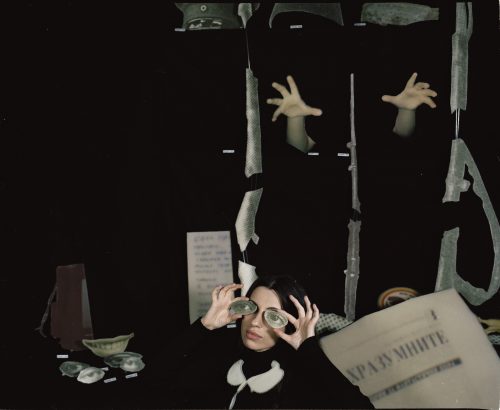
Maciej Nowacki
Shamelessness
Project Info
- 💙 Clay.Warsaw
- 💚 Romuald Demidenko
- 🖤 Maciej Nowacki
- 💜 Romuald Demidenko
- 💛 Bartosz Górka & Szymon Sokołowski
Share on
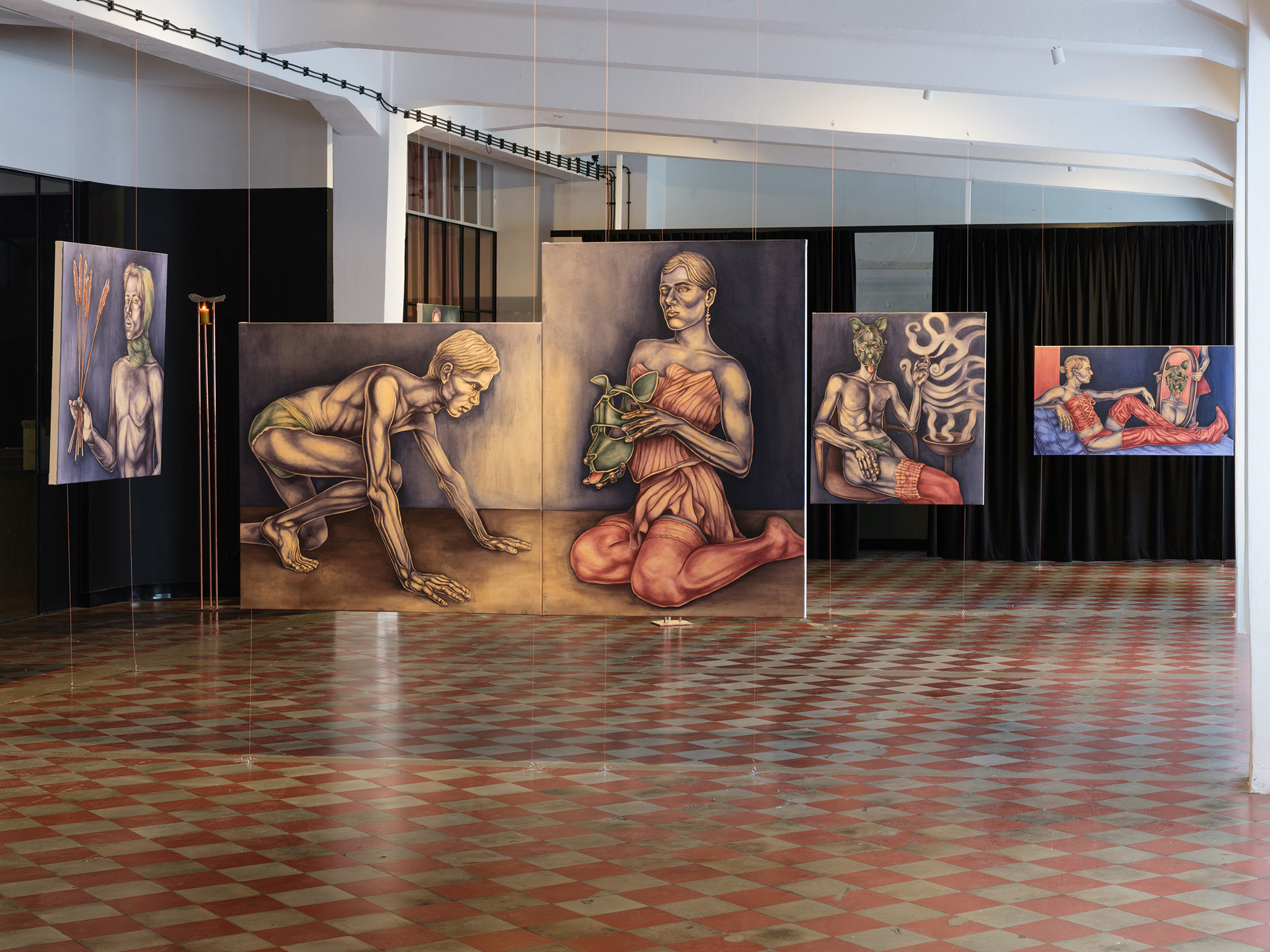
exhibition view, photo: Bartosz Górka
Advertisement
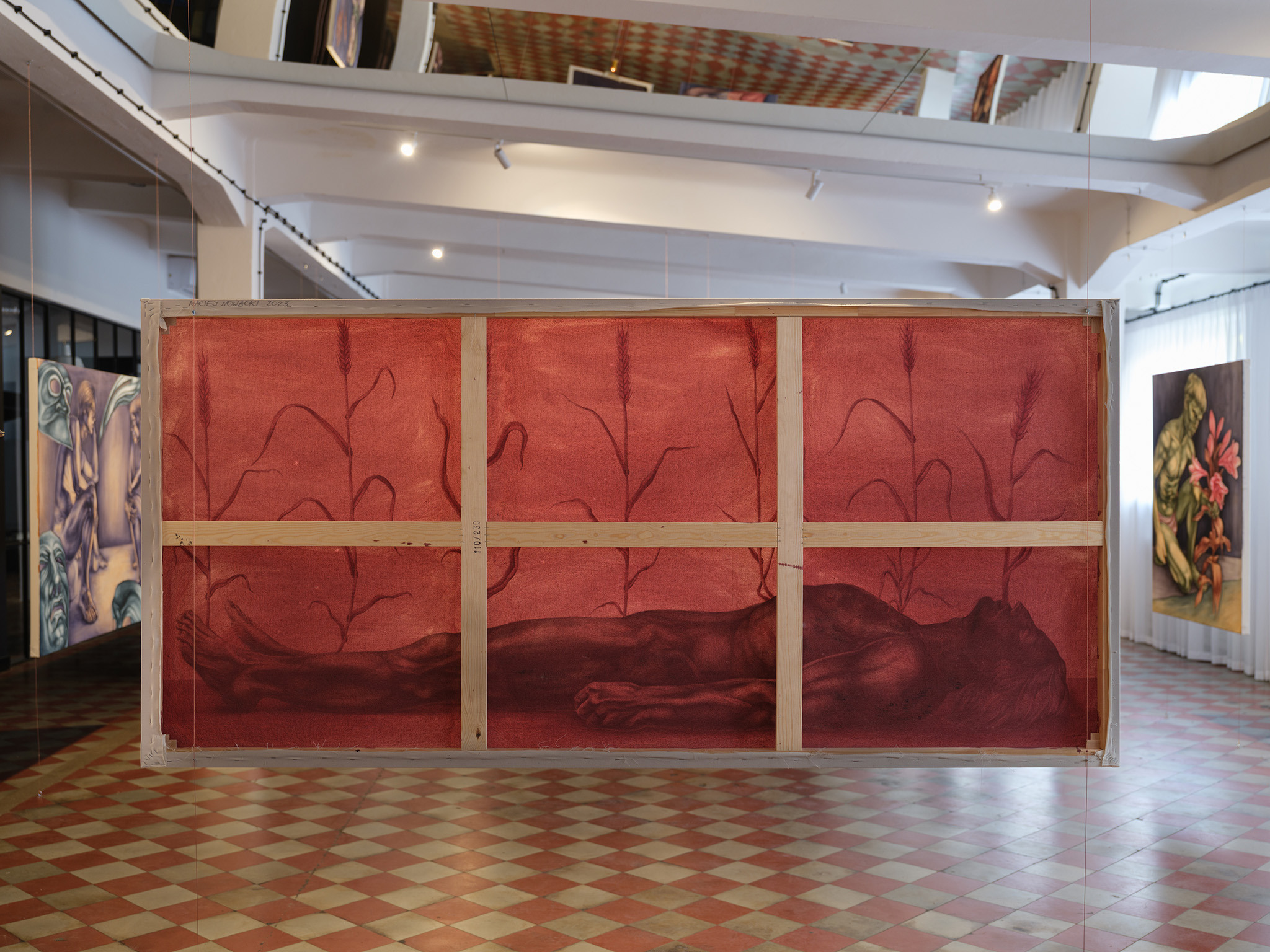
exhibition view, photo: Bartosz Górka
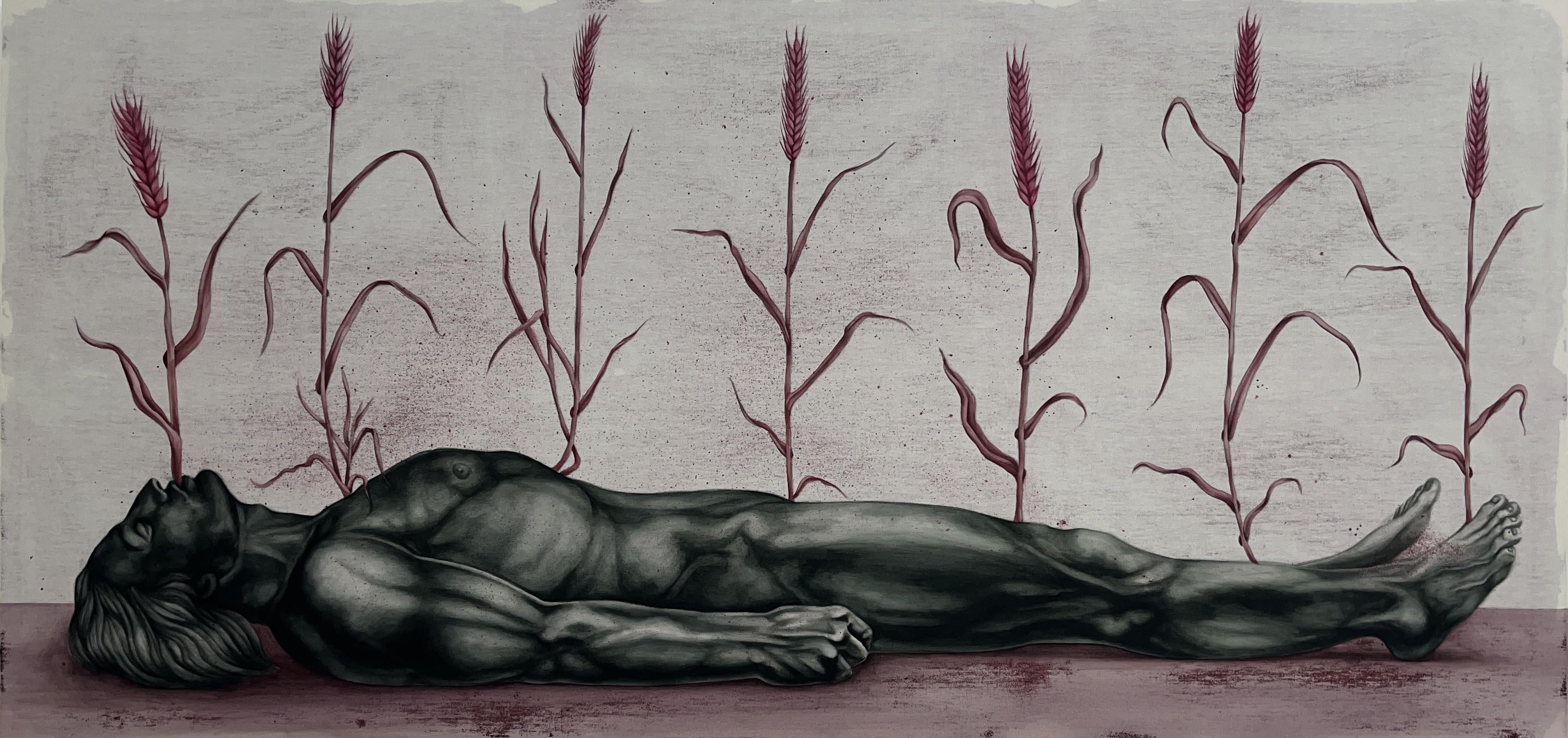
You have to be in hell to see heaven, acrylic on canvas, 110x230, 2023

bez tytułu, acrylic on canvas, 120x140cm, 2023, photo: Szymon Sokołowski

A gift (Nikita&Danil/Dana), acrylic on canvas, 110x120 + 140x100, 2023, photo: Bartosz Górka
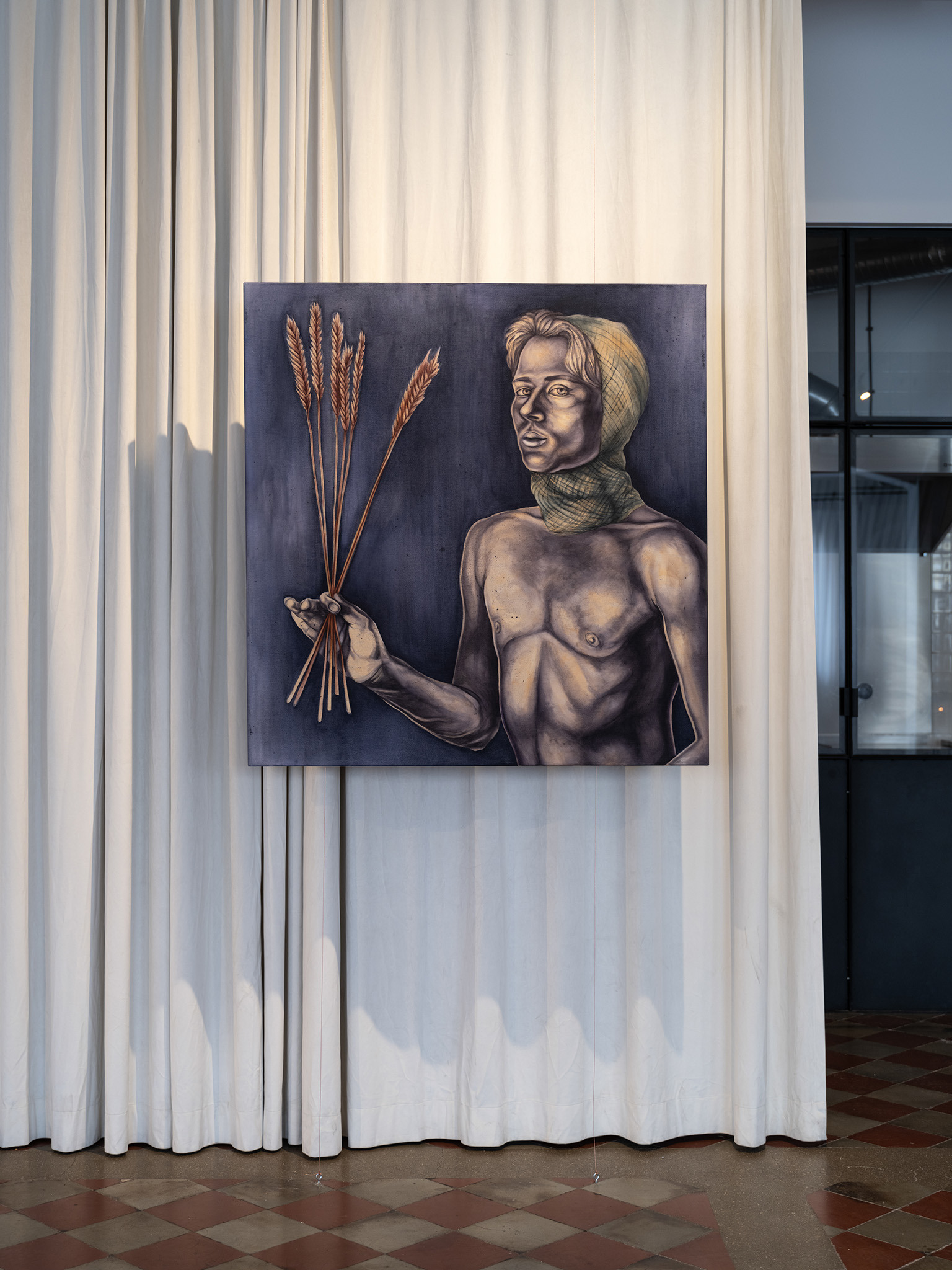
Knight of change (Danil), acrylic on canvas, 115x110cm, 2023, photo: Bartosz Górka
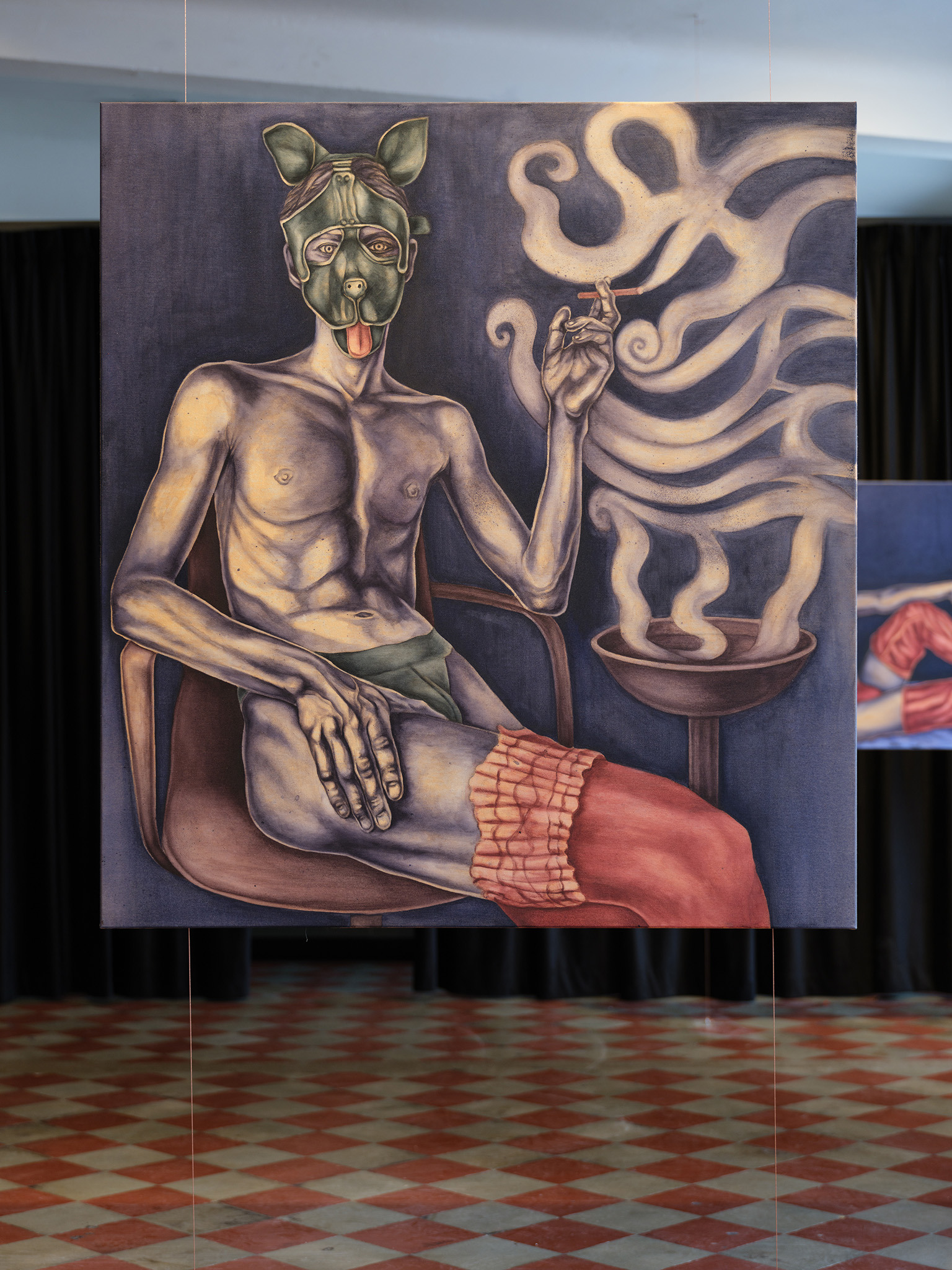
Shame (Nikita), acrylic on canvas, 120x100cm, 2023, photo: Bartosz Górka
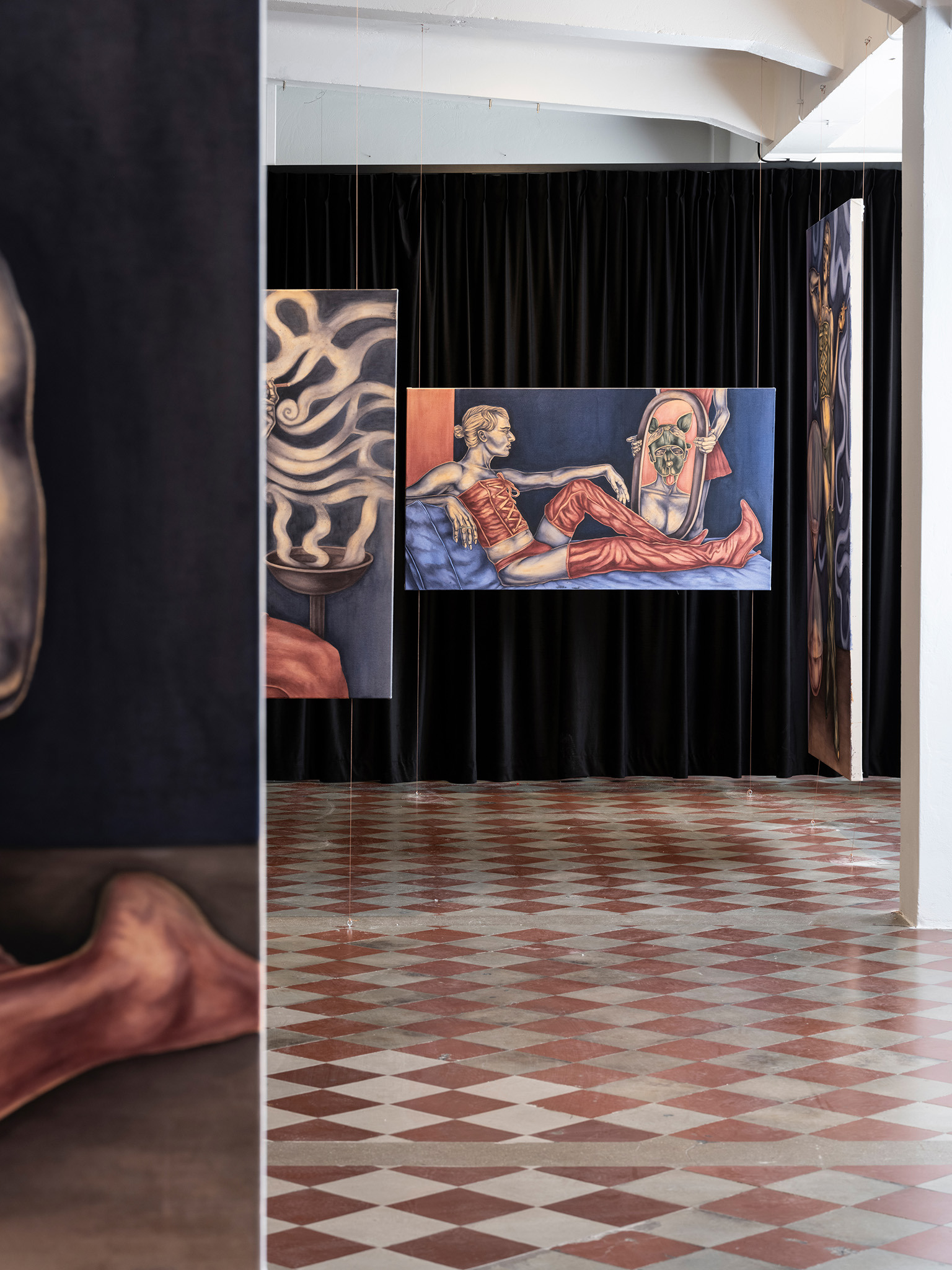
exhibition view, photo: Bartosz Górka
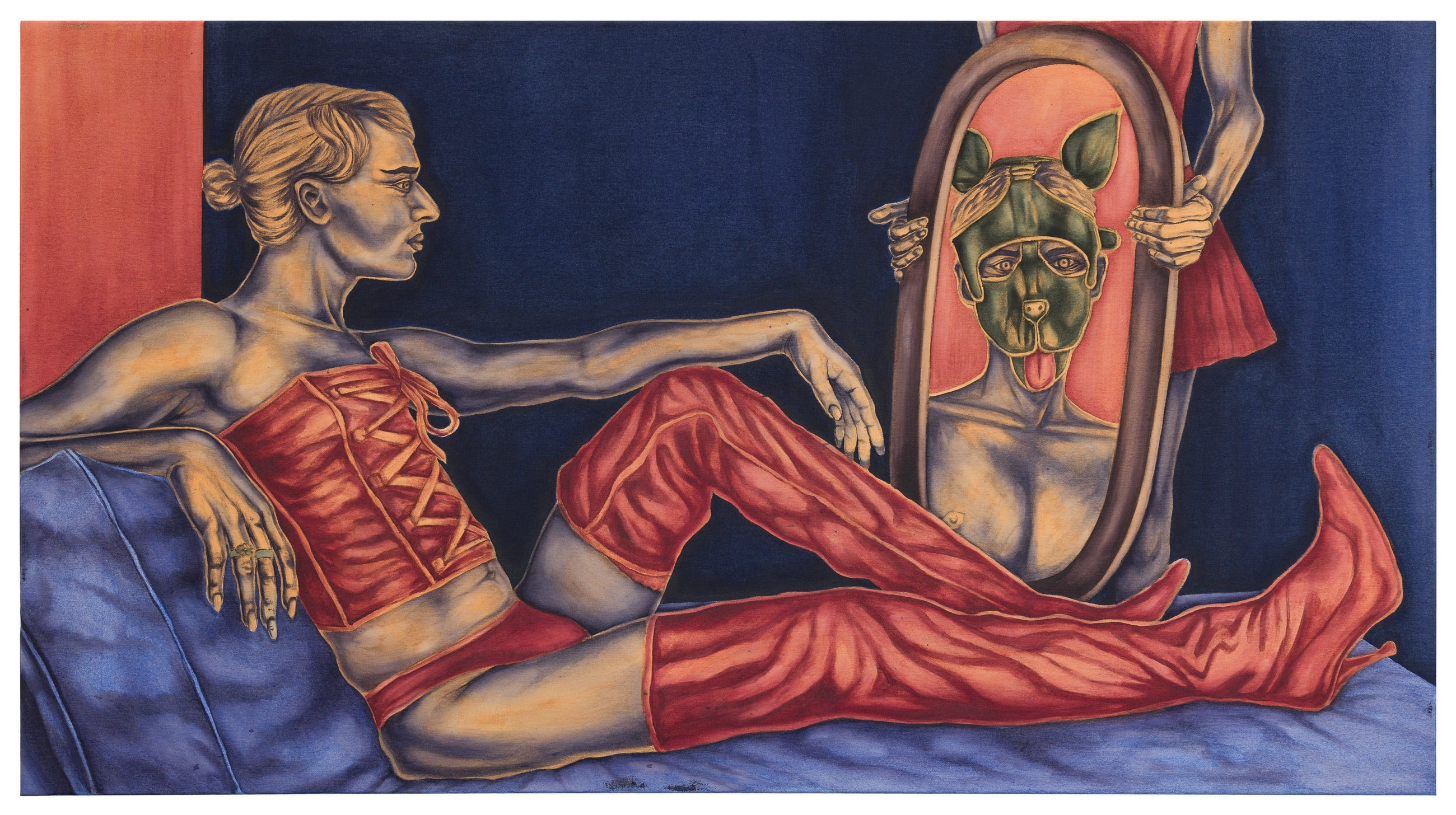
At home II (Danil/Dana&Nikita), acrylic on canvas, 85x155cm, 2024, photo: Szymon Sokołowski

Plotting (me&Nikita), acrylic on canvas, 130x185cm, 2023, photo: Bartosz Górka

exhibition view, photo: Bartosz Górka

Knight of the flowers (Nikita), acrylic on canvas, 140x110cm, 2023, photo: Szymon Sokołowski
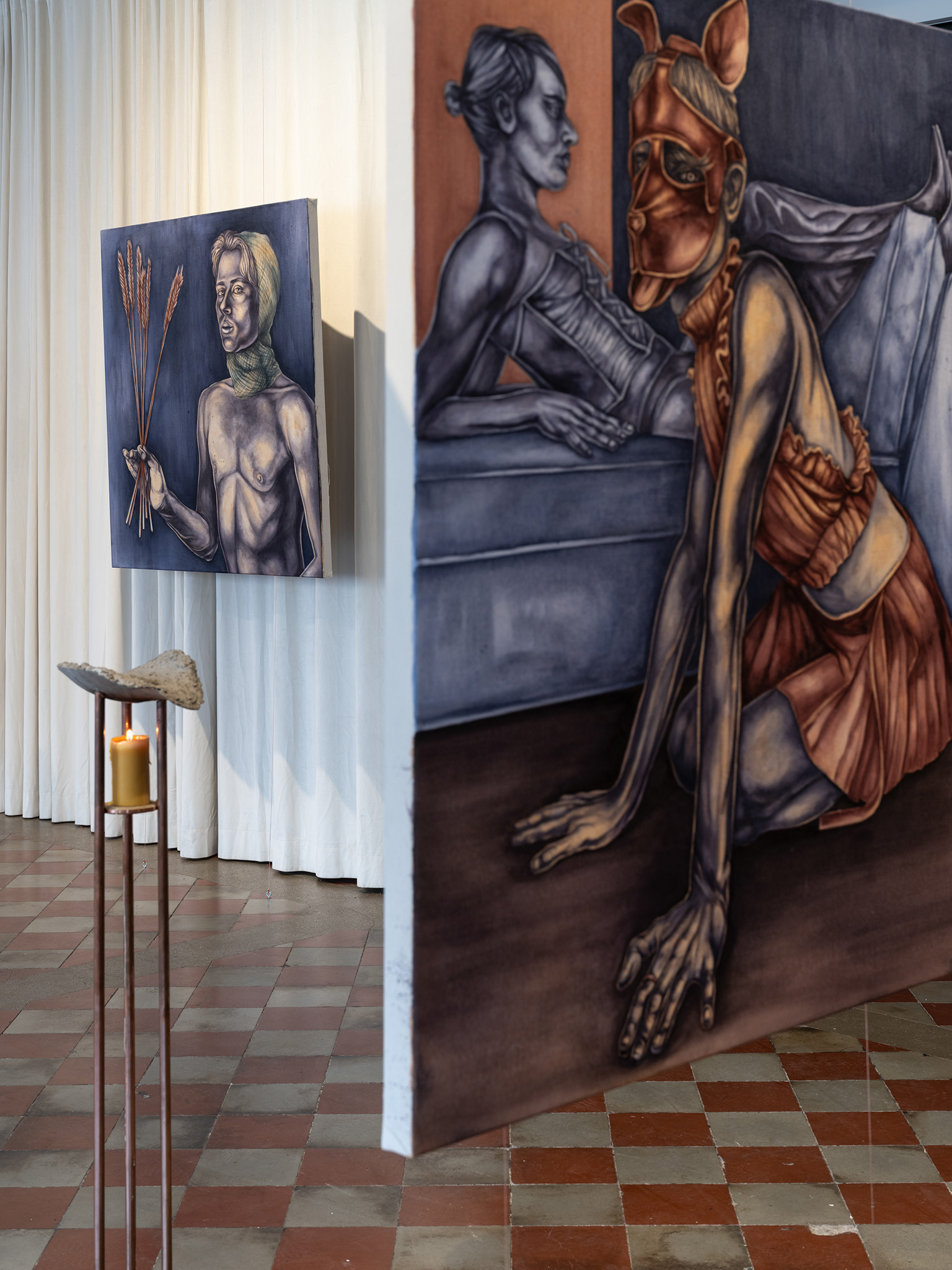
exhibition view, photo: Bartosz Górka

At home (Nikita&Danil/Dana), acrylic on canvas, 115x85cm, 2024, photo: Bartosz Górka

exhibition view, photo: Bartosz Górka

Escape from Fallopolis, (Danil&Nikita), acrylic on canvas, 75x120 cm, 2024, photo: Bartosz Górka
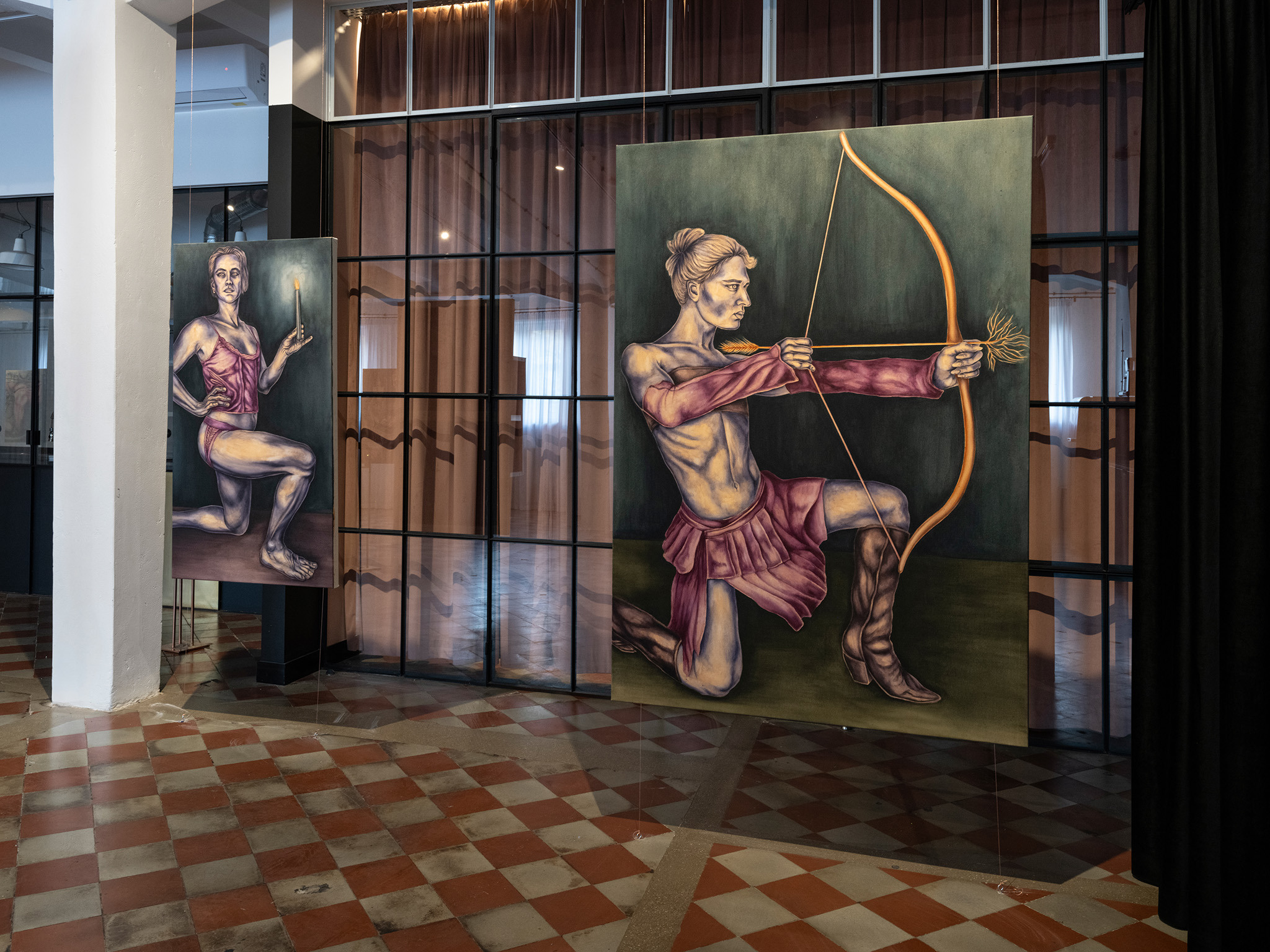
exhibition view, photo: Bartosz Górka
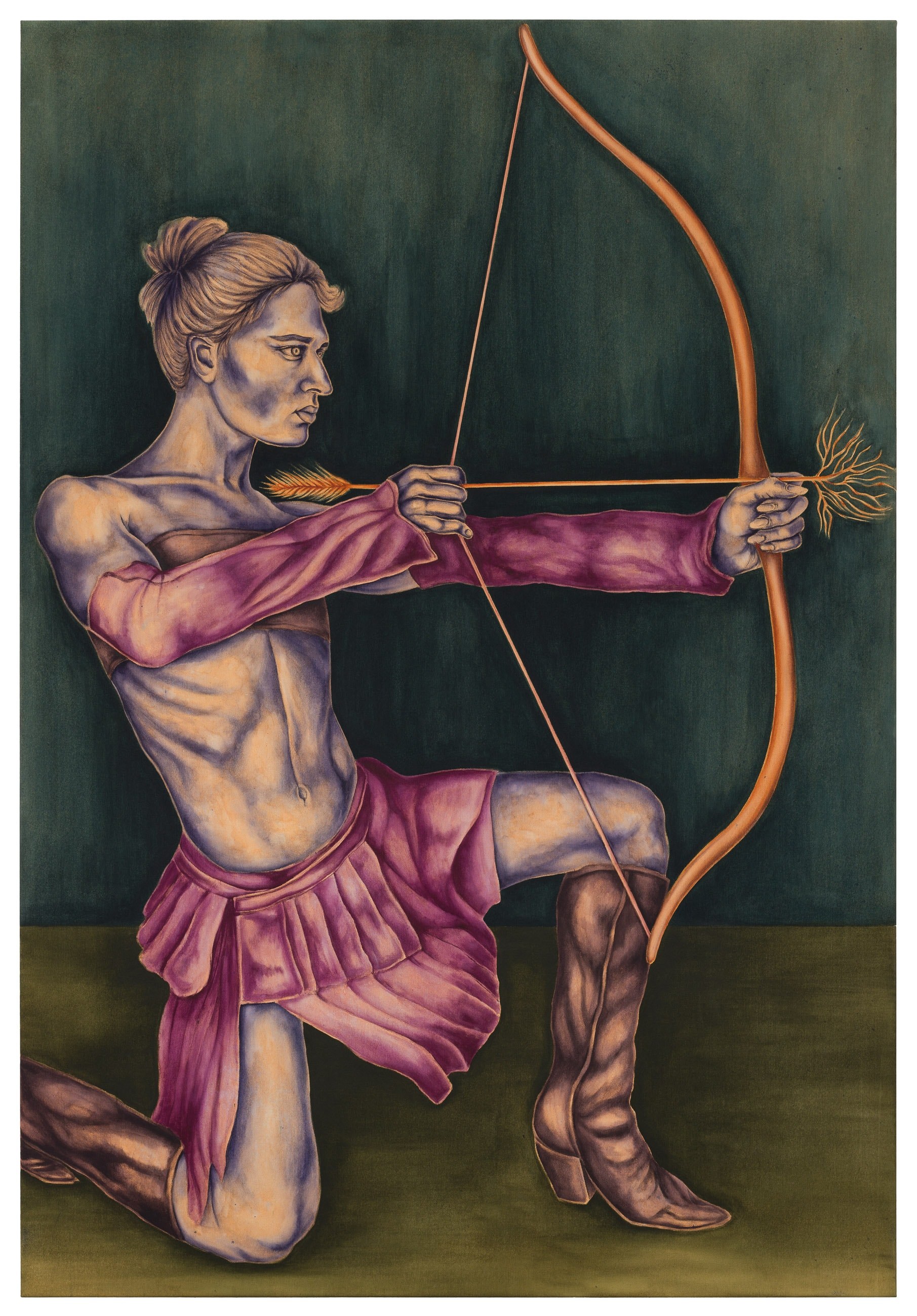
In to the future (Dana), acrylic on canvas, 175x120cm, 2024, photo: Szymon Sokołowski
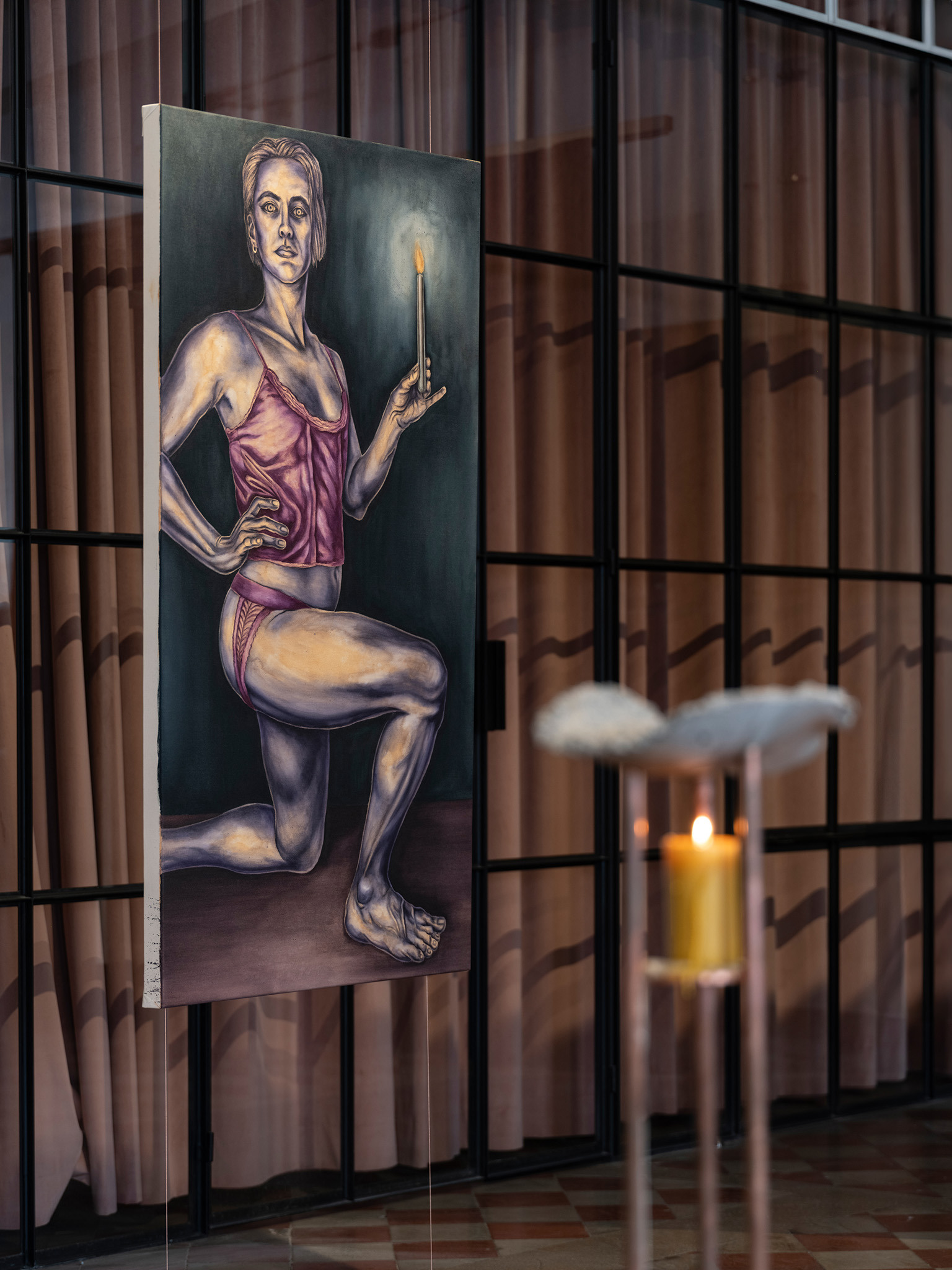
exhibition view, photo: Bartosz Górka
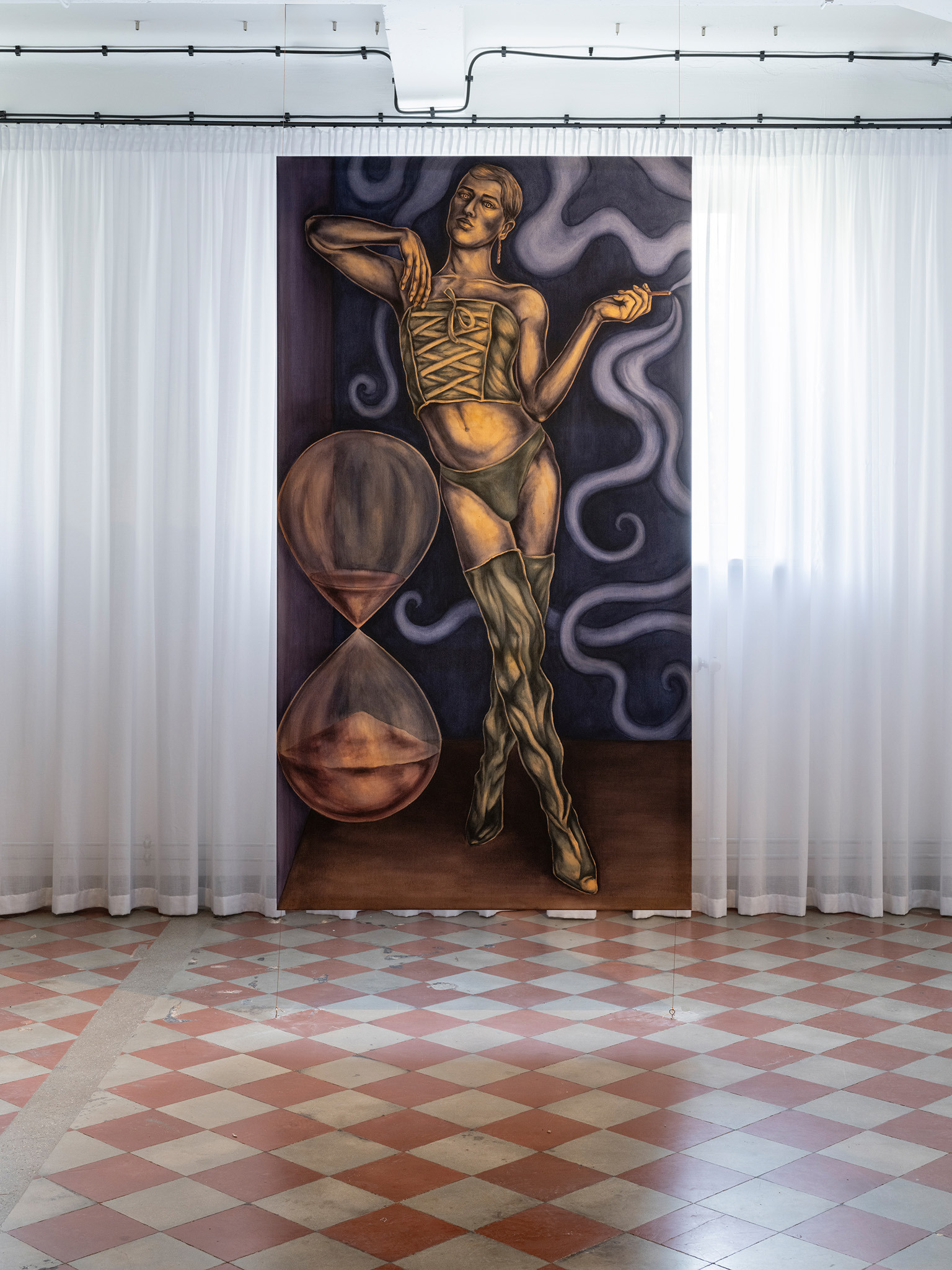
Not yet there (Danil/Dana), acrylic on canvas, 200x110 cm, 2024, photo: Bartosz Górka
“We may never touch queerness, but we can feel it as the warm illumination of a horizon imbued with potentiality” — José Esteban Muñoz, Cruising Utopia: The Then and There of Queer Futurity. New York, New York University Press, 2009, p. 1.
As I write these words, I am reminded of the coloured spine books of Art Now. I wonder what artistic phenomena and figures would be included in contemporary editions. ‘Our time’, that is, whose time is it? Times of contempt or pride for non-heteronormative people, of systemic violence or hope, of minority plight or alliances, or perhaps a complex reality of all of the above, in which we are left to decide which side to take? It is a time of struggle for dignity, certainly, but also of potential gradual change, replacing the fear that accompanies many of us. If we can't admit it, this is the best evidence that one of our hidden anxieties is present. In the vicious circle of fear is shame. Non-heteronormative people know this well. It manifests itself early in life when we learn that our behaviour or appearance may be perceived as inappropriate by those around us and therefore subject to scrutiny.
The series of paintings that Maciej Nowacki has been creating over the past few months is not an illustration of fears or anxieties. On the contrary, it is a story about queer empowerment, i.e. the possibility of saying goodbye to fear or shame, accepting loss and the need to find one’s own identity. Known for his paintings in which he has captured the ‘canons’ of male body representation through homoerotic translation, the artist's recent work has been a constant search for a new formal language with which to plot new narratives. This is well illustrated in the exhibition’s opening painting, entitled You have to be in hell to see heaven (2023), which is the earliest in the series and stands out from the earlier works, which depict the male body more dynamically. Resting, as if toppled over, the naked figure merges with the horizon line; the ears protrude from the monumental body, heralding the beginning of the new. Since the time of the pandemic, Nowacki has been alluding to the iconographic motif of dreams, but also to those associated with the experience of collective loss, which in the current context is linked to the full-scale war in Ukraine. In later works, however, he overcomes his sense of powerlessness by allowing himself to be transformed.
The paintings on display in the exhibition have a slightly muted colour palette in comparison to the previous series, and a contrasting colour palette that cools the figures or their details visible in the central part of the representation. The use of a more modest palette may be due to the fact that the artist has been using the medium of photography to create new works. Most of the works on display are a new collection of paintings created over the last few months, based on the previous encounters he documented. Nowacki focuses on the body (not necessarily, as before, the male body), polemicising against traditional modes of portraiture, referring, as in earlier works, to various forms of representation, but in this case increasingly to his own experiences. In this performative process, Maciej Nowacki involves the people with whom he creates a kind of intimate archive. He interweaves their current queer stories with a visual layer that evokes associations with the past and provokes reflection on the perspective of the reciprocity of the relationships between the portrayed figures, the alliances they construct and the forms of rebellion. Nowacki overwrites the potential for meaning that is relevant both to himself and to other subjectivities, bodies and voices by giving or restoring visibility to the characters he depicts and their non-linear narratives. As he points out, he is keen to create ‘a multi-layered visual story based on the experiences of queer people — non-heteronormative, homosexual and non-binary’, ‘(…) who do not identify with normative definitions of masculinity’.
The completed works are a kind of documentation, but they also make an important statement in the discussion of queer subjectivity. The figures depicted look forward, sometimes seeming to gaze self-assuredly at the viewer. They give us a glimpse of the studio where the people invited by the artist meet: among them a key figure of the Warsaw ballroom scene, whom we can recognise in the works Not yet there (Danil/Dana) and Knight of the Change (Danil/Dana), while other works, such as Knight of the Flowers (Nikita), feature the artist’s partner. A particularly interesting scene is that in which the two protagonists are seen in the shadow of the Palace of Culture, a post-Soviet phallic monument (Escape from Fallopolis, 2023). At the same time, Nowacki offers a new perspective on his own work, which until now has been full of historical tropes and conventions from which he seems to be breaking away, by weaving people from his environment and other motifs into his works. This gives his work a personal and universal dimension.
‘Call me whatever you like’, Nowacki seems to be saying through the title of his painting (2024). It is one of the last in the series, presented in the final section of the exhibition and characterised by its self-portrait form. The immediacy of the depiction is emphasised by the gaze directed at the viewer, which radiates boldness and encourages us to confront our own prejudices or expectations. As in many of the works, there is a distinctive light emanating from the centre of the composition: the flame of the candle held by the crouching figure illuminates the figure and brings out the details of their two-piece costume — purple jockstraps with decorative trim and a matching strappy top in the same shade.
An additional element in the exhibition, which in a sense transports us into the world created in Nowacki’s paintings, is a series of sensory objects in the form of narrow pedestals (Lessons in Darkness, 2023). These openwork candelabras in copper and concrete are made from casts of the artist's torso, through which the scents of tar, sage and beeswax are released. The organic scent, combined with the atmospheric candlelight, heightens the sense of derealisation or even intoxication, not only taking us into the realm of queer fantasy, but also inviting us to imagine together new queer communities of the future that may be emerging at this very moment.
Romuald Demidenko


